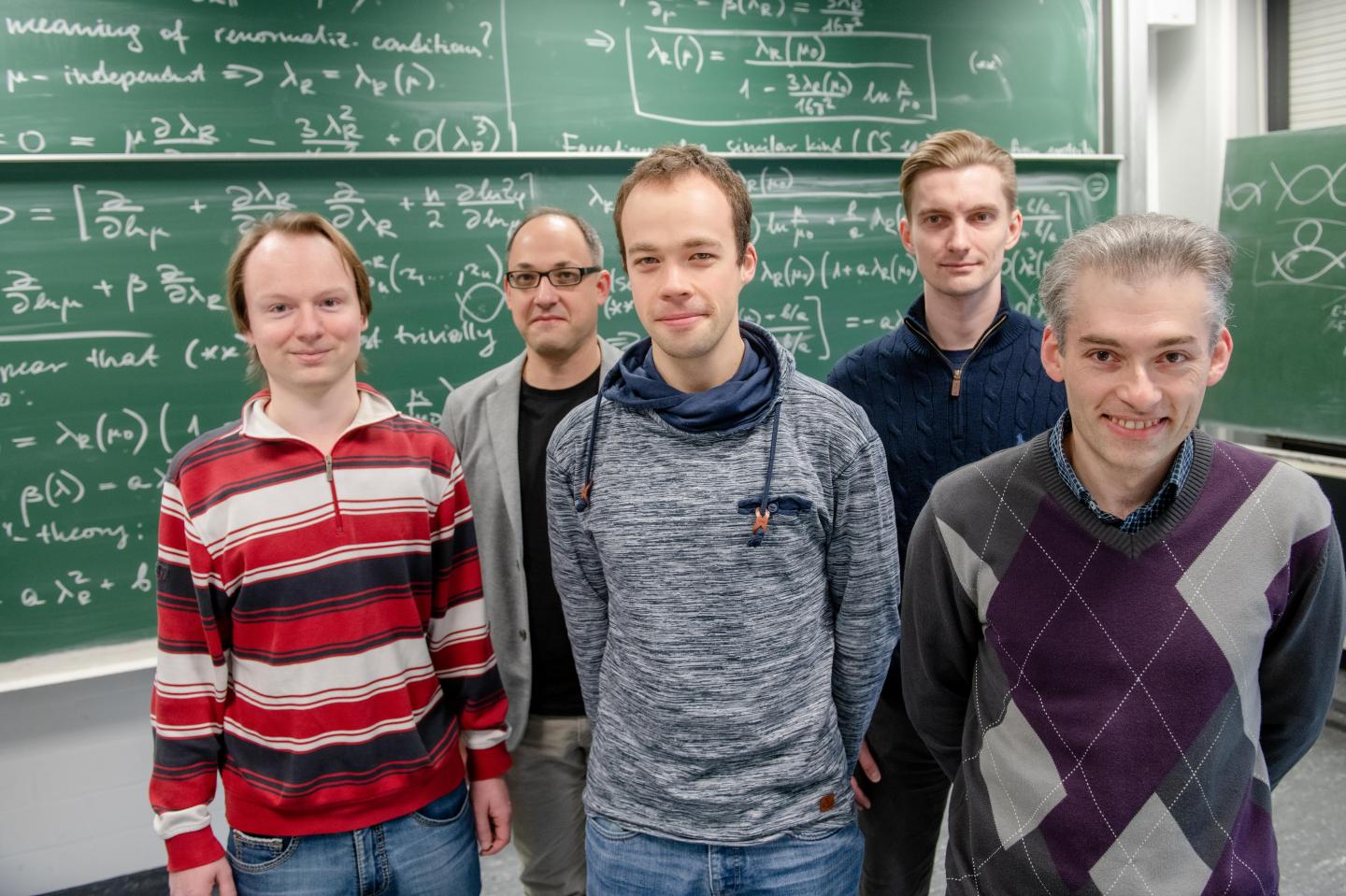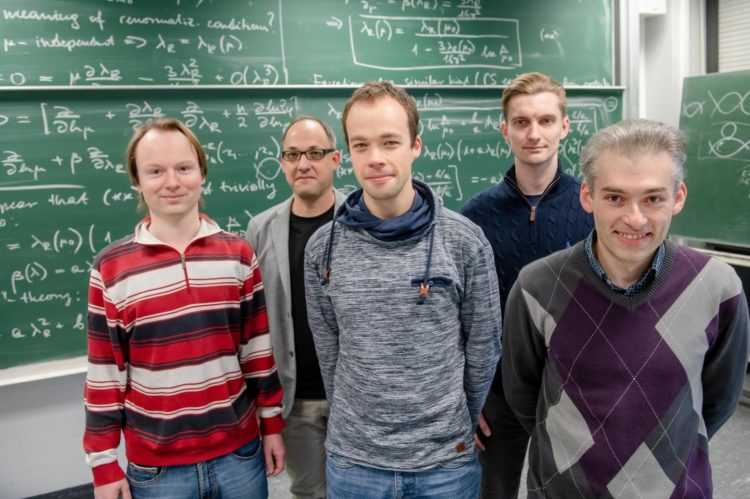Theoretical physics

Credit: RUB, Marquard
The size of neutrons cannot be measured directly: it can only be determined from experiments involving other particles. While such calculations have so far been made in a very indirect way using old measurements with heavy atoms, a team at the Institute of Theoretical Physics at Ruhr-Universität Bochum (RUB) has taken a different approach. By combining their very accurate calculations with recent measurements on light nuclei, the researchers have arrived at a more direct methodology.
Their results, which differ significantly from previous ones, are described by the researchers headed by Professor Evgeny Epelbaum in the journal Physical Review Letters from 25. February 2020.
Neutrons and protons, jointly referred to as nucleons, form atomic nuclei and are therefore among the most common particles in our universe. The nucleons themselves consist of strongly interacting quarks and gluons and have a complex internal structure, the precise understanding of which is the subject of active research. One of the fundamental properties of nucleons is their size as determined by charge distribution. “Inside, there are positive and negative charge regions which, when taken together, result in zero total charge for the neutron,” explains Evgeny Epelbaum. “The neutron’s radius can be thought of as the spatial extension of the charge distribution. It thus determines the size of the neutrons.”
A very indirect method
To date, determinations of this quantity were based on scattering experiments with extremely low-energy neutrons on an electron shell of heavy atoms such as bismuth. “Researchers would direct such a neutron beam at a target of heavy isotopes carrying many electrons and determine how many neutrons passed through,” says Bochum-based physicist Dr. Arseniy Filin. This allowed one to extract the size of the neutrons. “This is a very indirect method,” points out the physicist.
In their current project, the group has for the first time determined the neutron charge radius from the lightest atomic nuclei. In a theoretical study, they have succeeded in calculating the deuteron radius with high accuracy. The deuteron is one of the simplest atomic nuclei and consists of one proton and one neutron. Since the two nucleons in the deuteron are relatively far apart, the deuteron turns out to be much larger than its two constituents. “Our accurate prediction of the deuteron radius, combined with high-precision spectroscopic measurements of the deuteron-proton radius difference, yielded a value for the neutron radius that is about 1.7 standard deviations off the previous determinations,” concludes Dr. Vadim Baru from the Helmholtz Institute for Radiation and Nuclear Physics at the University of Bonn. Accordingly, the previously assumed value for the size of a neutron is to be corrected.
###
Funding
This work was supported in part by DFG and NSFC through funds provided to the Sino-German CRC 110 “Symmetries and the Emergence of Structure in QCD” (NSFC Grant No.11621131001, Grant No. TRR110), the BMBF (Grant No.05P18PCFP1) and the Russian Science Foundation (Grant No. 18-12-00226).
Original publication
Arseniy A. Filin, Vadim Baru, Evgeny Epelbaum, Hermann Krebs, Daniel Möller, Patrick Reinert: Extraction of the neutron charge radius from a precision calculation of the deuteron structure radius, in: Physical Review Letters, 2020, DOI: 10.1103/PhysRevLett.124.082501
Press contact
Prof. Dr. Evgeny Epelbaum
Institute of Theoretical Physics II
Faculty of Physics and Astronomy
Ruhr-Universität Bochum
Germany
Phone: +49 234 32 23707
Email: [email protected]
Media Contact
Dr. Evgeny Epelbaum
[email protected]
49-234-322-3707
Original Source
https:/
Related Journal Article
http://dx.





